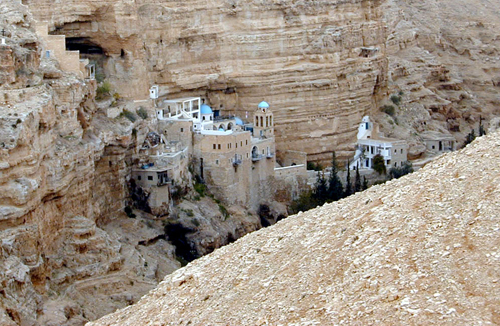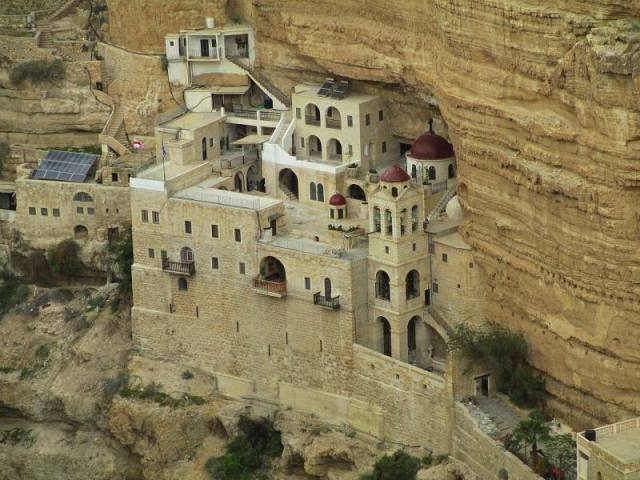The Monastery of St. George of Hozeva, or Orthodox Monastery of St. George, is a monastery located in Wadi Qelt, in the West Bank, Palestine. It is located about 9 kilometers from Jericho and 20 from Jerusalem.
Its construction in the walls of the cave was started in the 4th century by monks in honor of the belief that the holy prophet Elijah lived here in solitude.
According to Luke’s gospel, St. John the Baptist preached and baptized with water here. St. George Hozeva came to the monastery in the 5th century and dedicated his life to its construction, creating one of the first preserved sanctuaries of the Greek Orthodox Church. Today, the monastery houses the relics of St. John of Romania, which are set in a glass stage. The body of the saint is perfectly preserved and represents one of the greatest values of this monastery, which unrealistically emerges from the stone of the inaccessible canyon.

The monastery was completely destroyed by the Persians in 614, when they occupied the valley and massacred the fourteen monks who guarded it. The bones and skulls of the injured monks are now preserved in the monastery chapel. These 3000 and more martyrs’ relics are so alive that during their Supplication canon every week an exquisite fragrance and raw smell of fresh slaughtered blood are alternately exuded from them!
After the attack of the Persians, the monastery remained abandoned for almost 500 years, until the XII century when its reconstruction was attempted by the Crusaders. After the Crusaders got expelled, the monastery again fell into oblivion. The Greek monk Kalinikos settled here in 1878 and began rebuilding the monastery, which was completed in 1901.

Today, the monastery of St. George of Hozeva is unique for it also accepts pilgrims as a precedent set by a Byzantine noblewoman claiming that the Virgin had sent her there for a cure for an incurable disease.
The monastery is located on the road from Jericho to Jerusalem. The pedestrian bridge over the canyon connects it to the road.Therefore, in order to reach it, it takes a lot of hiking on the slopes and hills. For this reason, a visit to the monastery of St. George of Hozeva is itself considered a small feat.



